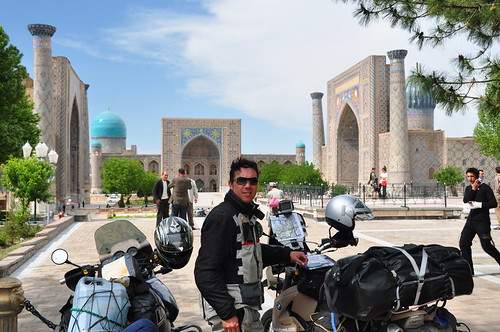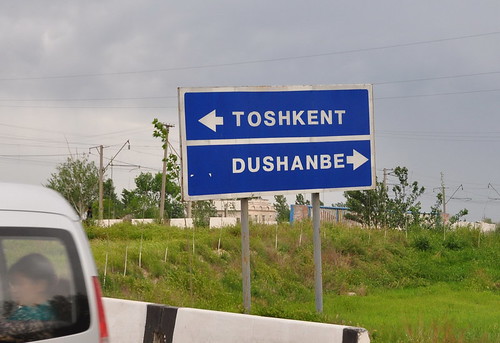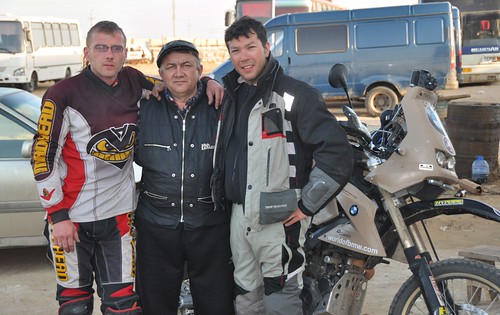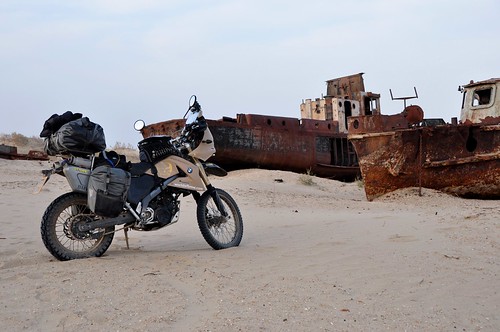Tashkent: 09.05.09
(note track maps now updated in the Trip Data section)
One of the principles behind choosing the overall route was where possible I was going to try routes that I felt were lesser travelled or untravelled by western motorcycle travellers … in doing that, documenting them will expand the knowledge base on sites like Horizons Unlimited. I also had the chance to explore some regions that have had a long standing interest to me, like the North Caucasus, Kalmykia et al. So this is a chance to review some of those routes as alternatives for those planning on heading out on the great trek east, to Mongolia, Vladivostok, Magadan or wherever.
Lets start with the Balkans.
Its a bit out of the way for most people heading east thru Ukraine, but our experience in the Balkans was very good. Inexpensive food, accomodation, great biking roads, plenty of good fuel and a real sense of adventure going thru places like Albania give the Balkans a real thumbs up from me. Sure there are a couple of highlights heading thru Czech Republic and Slovakia, but in general its all over very quickly and its all very tame. The Balkans was better preparation for conditions in the CIS, while still remaining very close to EU countries in case of problems. Borders were no problems at all … very quick, and the only point I would make is definately take a green card from your insurance company.
Crimea:
Certainly more interesting that the Ukraine in general. Ukraine lasks the diversity of Russia and for me is just one of the countries I push thru on my way to Russia, tolerating the overzealous cops and border officials as par for the course. (in terms of dodgy cops and border officials, recent years has seen a marked improvement on the Russian side, while the Ukraine is still dodgy as you like … such that Russia is notably more transparent, open, efficient and less corrupt than Ukraine) Perhaps the main areas of interest in Ukraine are the Carpathian mountains in the east and Crimea in the south. I missed the Ukrainian Carpathians (having seen them in Romania) and the interesting scenery and ethnic history of Crimea definately helped break up the Ukraine. Travelling that way also allowed me to head pretty much directly into the Caucasus once I entered Russia. Also found a cracking bike mechanic in Yalta … that alone could be a reason to have Crimea on a route east. Any teething problems can be nipped in the bud there at Valera’s place.
North Caucasus:
This has largely been avoided by western bikers, partly because of a lack of knowledge about what is there and to a lesser degree a fear about safety. I hope this blog has shown how much interesting peoples and cultures can be found between Adegeya in the west and Dagestan in the east. On top of that you have Europe’s highest mountain range. Considering how dull a long ride across Russia can be if you stick to the main routes I personally thing taking in interesting regions like the North Caucasus should be compulsory. The last thing you want from Russia is an endless chore of just eating up miles for the sake of getting across the country … one of the most interesting counties in the world in terms of both peoples and geography. If I could only recommend one thing from this trip so far, its to go to the North Caucasus, with a bit of knowledge about the region and you will get a hell of a lot out of it.
The Beyneu Route:
The two main routes to central asia for western motorcyclists are to go via Azerbaijan and Turkmenistan or to go down Kazakhstan thru Aktube to Chimkent. There are plenty of reasons to look for alternatives, such as the Beyneu route I took. (a) the ferry from Baku to Turkmenistan has no schedule. Its not unheard of to wait 3-4 days for the ferry, spend a day or more on the ferry and then wait in harbour at Turkmenistan end for another 2 days before unloading. On top of all that uncertainty, Turkmenistan may give you a 5 day transit visa, and may insist on a tourist visa. The Tourist visa requires you to be escorted thru the country at great expense. in any case, the visas are not that easy to get, and the only thing worth seeing in the country is the Darvarza burning crater, I can think of 100 reasons not to travel thru Turkmenistan.
(b) travelling via Aktyubinsk (Aktube) means you miss the highlights of Uzbekistan. You wont see Khiva, Bukhara or Samarkand. You wont see Khwarezm or the Karakalpaks. Of the 5 central asian republics, 3 are countries I reckon you definately want to see … Uzbekistan for the culture and food, and Kyrgyzstan and Tajikistan for the mountains and mountain roads. Kazakhstan and Turkmenistan are (in my book) “missable”.
Putting that all together, and the route through Beyneu should be the main route. The route of first instance ! I would recommend it. The Kazakh side is pretty dull, but you do get to take in all the interesting bits of Uzbekistan without going out of your way. And it is a route that is reasonably well used by Russian and Kazakh bikers!





 Andrei and I left the others in Shakrisabz and headed into the hills. Here poppies grew wild beside the highway and in the fields… it was a subtle reminder that we were less than 2 hours away from Northern Afghanistan – the worlds biggest source of poppies. We had to cross a pass up at 1660 metres to get to Samarkand. On the way we passed a number of nice looking chaikhanas. Since we hadnt had breakfast, we decided to stop off for some food and some tea.
Andrei and I left the others in Shakrisabz and headed into the hills. Here poppies grew wild beside the highway and in the fields… it was a subtle reminder that we were less than 2 hours away from Northern Afghanistan – the worlds biggest source of poppies. We had to cross a pass up at 1660 metres to get to Samarkand. On the way we passed a number of nice looking chaikhanas. Since we hadnt had breakfast, we decided to stop off for some food and some tea. 



















